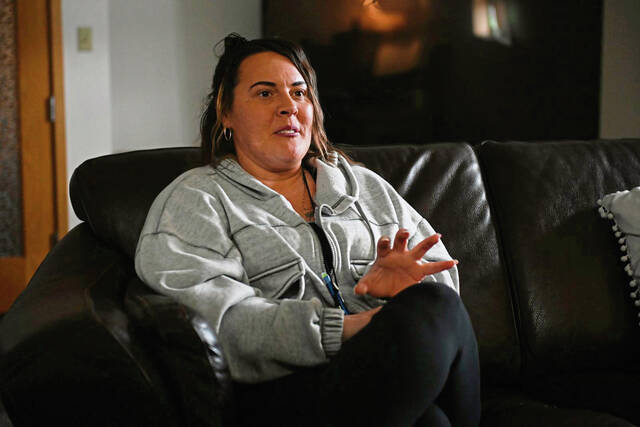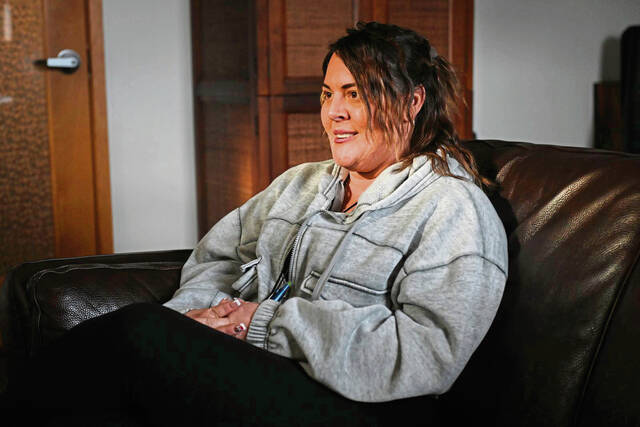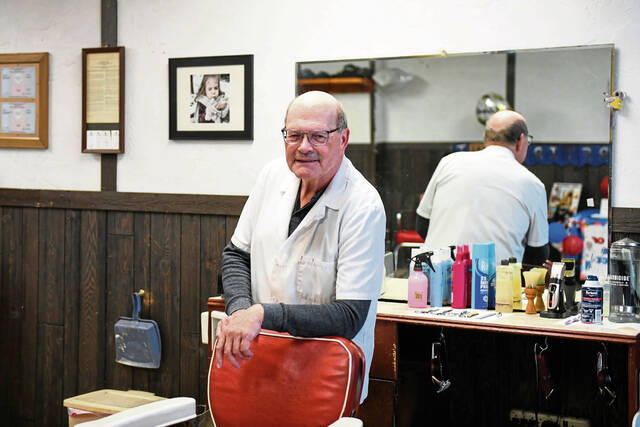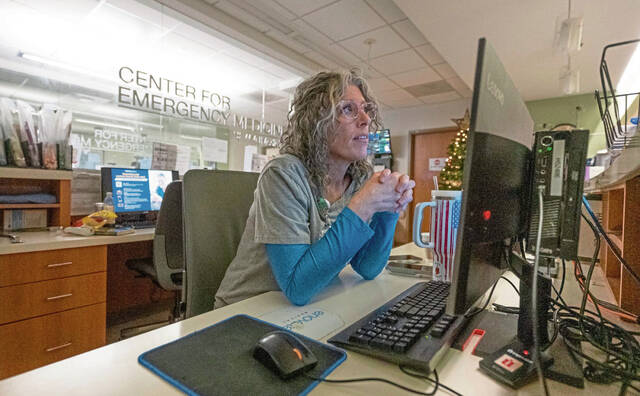Stephanie Taylor’s path to sobriety was more well-worn than winding.
She was first arrested in 2015, at age 25, after selling cocaine to a police informant out of her mother’s Vandergrift home.
Taylor went to jail, rehab and a halfway house — what she calls an “insane cycle” — three times in three years. Her last arrest came when she stole her stepfather’s gun to get drugs.
“County prison was a revolving door for me,” she said. “I was called a menace to society. They said, ‘There’s no hope left for her.’ ”
Prosecutors gave Taylor a choice: two to five years in prison or complete a drug court program.
“It was a God-given program because not everybody gets the program,” she said. “I believe that I was put there because God knows my heart.”
Although drug court was supposed to be for 18 months, Taylor said she was in it for nearly three years. She relapsed while in it but has been clean since Aug. 18, 2019. Now, at 35, she is a recovery coach at Lost Dreams Awakening in New Kensington.
“Ultimately, nobody could get me clean but me,” Taylor said. “Court couldn’t do it. Probation couldn’t do it. Mom couldn’t do it. Prayer didn’t do it. It was ultimately me deciding this is it and realizing nobody was going to save me but me.”
A difficult recovery
Recovery from fentanyl addiction is possible, said Dr. Julia D’Alo, chief medical officer for Gateway Rehab, based in Beaver County.
“I don’t want anyone to think that it isn’t,” she said. “Just because fentanyl is so much more potent than other opioids doesn’t mean you can’t enter into recovery if you’re addicted to fentanyl.”
Many who have used opioids describe the experience with fentanyl as very different. Dependency comes faster.
“They’ll say they don’t really get high. They just kind of nod off,” D’Alo said. “You use the drug and you very quickly are minimally conscious. You wake up starting to feel sick, and the only way to feel better is to obtain the drug again.”
The recovery path for someone addicted to fentanyl is the same as with other opioids, but it can be a more difficult one.
Buprenorphine, a synthetic opioid developed in the late 1960s, is the medication that is the standard of care for opioid use disorder, D’Alo said. The difficulty in getting people on it is that a period of time must pass for the opioids to leave their systems before buprenorphine can be given.
“If you give them that medication too early, you can precipitate withdrawal and make them very sick,” she said. “Fentanyl accumulates in tissues and sticks around a long time. If you precipitate withdrawal, you make them very sick. Although that’s a treatable condition, oftentimes they’ll leave treatment or do anything to obtain more fentanyl to make themselves feel better.”
‘Meet them where they are’
Carmen Capozzi founded Sage’s Army 10 days after his son, Sage, 17, died from a heroin overdose in March 2012. The organization has recovery centers in Greensburg and Irwin.
Its focus, naturally, was heroin. But Capozzi said it’s been at least eight years since they last saw heroin. Now it’s fentanyl or fentanyl mixed with xylazine.
So Sage’s Army has had to change, too.
“We have to move with the times. I never thought that would happen,” Capozzi said. “The drugs change, and the ways we approach them change. The whole system has to change.”
Instead of the message of “abstinence plus change equals recovery,” the approach today is harm reduction, said Capozzi and Janice Olsen, director of operations for Sage’s Army.
That might mean getting a fentanyl addict onto something else, medications such as methadone or suboxone, to lower the risk of an overdose and death, which they say is much greater with fentanyl than it is with heroin.
“We meet them where they are,” Capozzi said. “We help them design their recovery, whatever that looks like. We’re taking a broader approach to recovery today.
“I would like to see mental health and substance use services work together more.”
Less toughness and more empathy is needed now, Olsen said.
“The chances of them walking out the door and using and dying are so much higher than it was 10 years ago,” she said.
‘I have a choice’
Taylor used drugs because she could not face herself clean. Drugs quieted the noise and stopped the nightmares; they helped her escape reality and forget.
“It was easier to just party than to face the reality of my life,” she said. “When you don’t know how to escape the pain, you run to the very thing that causes it. I didn’t know there was help. I didn’t know there was a different way to live. I just always ran to the pain.”
Taylor says she never wants to be the person she was in active addiction. The people in her life say she’s destined for greatness — no longer viewed as a menace to society — and she believes them.
“If those same people knew me when I was in the streets and doing what I did when the fentanyl had a hold of me, that’s not what they would say about me,” she said. “I love being my authentic self. Recovery gave me the ability to be my authentic self.”
Chronic absenteeism contributed to Taylor not graduating from high school, but she earned a GED. She wants to become a full-fledged therapist but isn’t rushing anything.
“I’m still just finding out who I am,” she said. “I’m finally living on my own and paying my own bills and being a productive member of society.”
Taylor was clean for nine months when her father, an addict, died three years ago.
“I knew if I handled my dad’s death clean that I could do anything and face any feeling — grief, loss, death — all those feelings that I could never face,” she said. “I realized if I got through that without using, I’d be OK.”
Despite that knowledge, Taylor keeps a healthy fear.
“I still am an addict. I will be an addict until the day that I die. It’s in my blood, and it’s in my genetics. It’s a part of me,” she said. “I know that I have a choice. I never thought I had a choice. The fentanyl took that from me. I was robbed from the choice the minute I was on the fentanyl. The only choice was to get more fentanyl.
“I couldn’t break free from that. But today I have a choice.”















